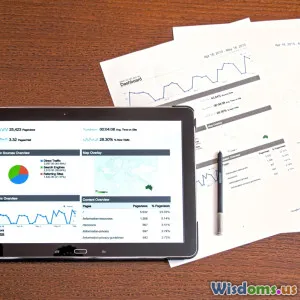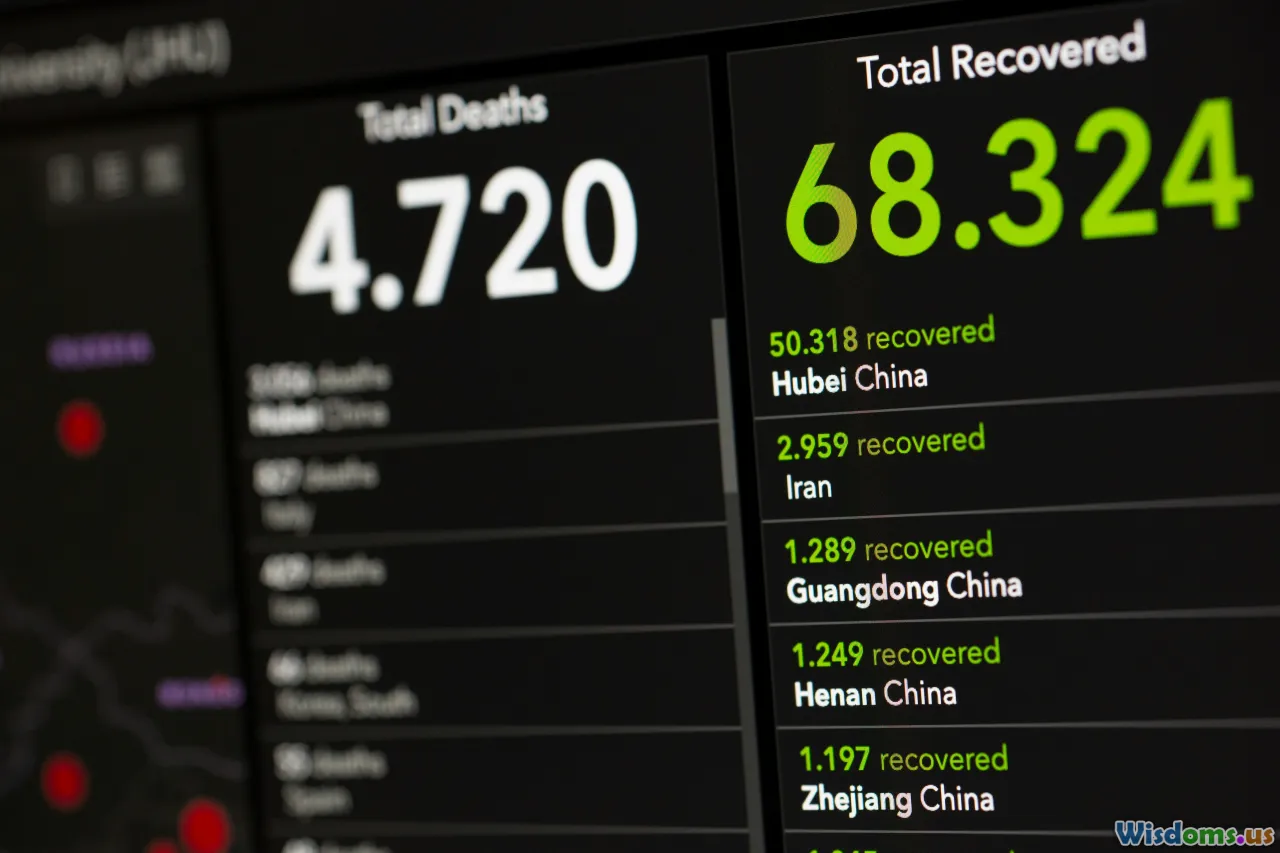
Five Steps to Stronger Information Governance
11 min read Discover five essential steps to enhance your organization's information governance for better security, compliance, and data management. (0 Reviews)
Five Steps to Stronger Information Governance
In today’s hyper-connected landscape, the value of data is matched only by its risk when mismanaged. From global enterprises to nimble startups, organizations grapple with storing, sharing, and securing a relentless deluge of information. Effective Information Governance (IG) empowers businesses to capture opportunities, reduce risk, and foster a culture of trust when it comes to sensitive data. But strong information governance doesn’t happen by chance—it demands a clear, actionable roadmap. This guide unravels five critical steps to help your organization evolve its IG program and futureproof its information assets.
Establish Clear Policies and Accountabilities

The linchpin of robust information governance is the creation and enforcement of comprehensive policies. These serve both as internal compasses and as shields against legal and regulatory fallout. Yet good policy doesn’t exist in a vacuum—it thrives on operational clarity and accountability.
What Does This Look Like in Practice?
-
Draft Detailed, Accessible Policies: Start with foundational documents covering data retention, classification, access, privacy, and breach response. Use plain language so that all staff can understand them without ambiguity. For example, Microsoft’s published data handling standards break down data types and required protections, making expectations clear and actionable.
-
Designate Responsible Owners: Assign information stewards or custodians for specific domains: records, legal, security, and compliance, among others. The international bank HSBC designates Information Asset Owners within each business line, making accountability direct and visible.
-
Review Regularly: Laws and threats change rapidly. Set a schedule—at least annually—to review policies, update responsibilities, and gather lessons learned from incidents or audits.
Pro Tip: Integrate policy refresh cycles with legal counsel and IT to ensure alignment with evolving global data regulations such as the GDPR or CCPA.
Map and Classify Your Data Assets

Organizations can’t protect what they don’t understand. Mapping and classifying information assets provides critical insight, allowing organizations to match controls to risk.
Why Data Mapping Matters:
Imagine a healthcare provider: beyond patient records—often the prime target—the business likely stores HR files, research data, emails, and financial records. When the U.S. Department of Health and Human Services (HHS) investigates breaches, they often find neglected ‘shadow’ repositories, where data accumulates without formal oversight or protection.
Concrete Methods:
-
Inventory Data: Use automated tools (such as Varonis or Informatica) to discover and catalogue data sources from cloud folders to on-premise machines.
-
Classify Data by Sensitivity: Not all data carries the same risk. Labels might include ‘Confidential’, ‘Internal Use Only’, or ‘Public’. For instance, the U.S. National Archives provides government-wide frameworks that help agencies distinguish between routine public documents and classified material.
-
Highlight Data Flows: Document how data is collected, transmitted, and stored. A simple flowchart visualizing where personal customer data travels in your system can highlight weak links or non-compliance.
Case Study: After several embarrassing leaks, a European telecom giant launched a six-month data mapping campaign. They uncovered unencrypted backups in old cloud storage, prompting targeted remediation and renewed board attention.
Implement Tiered Access and Security Controls

Powerful access controls sit at the heart of any effective information governance effort. By ensuring the right users access only the right information—and nothing more—organizations drastically cut the risk of accidental or malicious breaches.
Critical Tactics to Strengthen Controls:
-
Least Privilege Principle: Configure systems so that employees are granted only the data and systems access essential for their role. For example, a retail cashier should not be able to download entire customer databases, but a marketing analyst might legitimately access aggregate purchase data.
-
Multi-Factor Authentication (MFA): According to Microsoft, MFA blocks over 99% of automated attacks. Combine passwords with a text code, authenticator app, or biometric verification.
-
Segregate Duties: In financial firms, trading platforms are split so no one employee can both initiate and approve a large transaction, ensuring that errors or fraud require collusion.
-
Regular Access Reviews: Schedule periodic audits—in regulated sectors quarterly or even monthly. Use identity governance solutions, such as SailPoint, to automate the detection and remediation of excessive privileges.
Real-World Insight: When Capital One revamped access controls after discovering mis-configured cloud permissions in 2019, it not only improved its security stance but also lowered audit costs by streamlining entitlement reviews.
Drive Continuous Education and Engagement

People remain both the strongest and weakest link in information governance. With phishing attacks and social engineering on the rise, ongoing education is vital.
Ways to Activate a Culture of Governance:
-
Tailor Training Content: Customize materials for targeted audiences—executives should learn about regulatory obligations, whereas end-users need to spot suspicious attachments or bad links.
-
Gamify Awareness: Big tech firms like Google host annual ‘phishing tournaments’, where employees who report dummy attacks are recognized or rewarded. Such initiatives both educate and motivate.
-
Leverage Just-In-Time Prompts: Use pop-up tips or microlearning modules triggered during high-risk activities—like downloading large sets of sensitive documents. This reinforces protocols at the moment of greatest risk.
-
Mandatory Onboarding: Make IG training a prerequisite for all new hires, regardless of department. This sets organizational expectations from day one.
Tip: Publish monthly IG ‘scoreboards’ or Digest emails sharing incident statistics, remediation successes, or anonymized cautionary tales to maintain attention and engagement.
Monitor, Audit, and Adapt Proactively

The journey doesn’t stop at deployment. Successful information governance demands ongoing measurement, auditing, and rapid adaptation to changing threats and business models.
Implement Tools for Real-Time Oversight:
-
Automated Monitoring: Employ SIEM (Security Information and Event Management) platforms like Splunk or IBM QRadar to track and alert on unusual data activity—e.g., mass downloads, anomalous logins, or unauthorized data transfers.
-
Risk-Based Auditing: Schedule audits focusing on high-risk processes, such as transactions involving personally identifiable information (PII) or financial records, as these carry heavier regulatory and reputational consequences.
-
Metrics That Matter: Move beyond simple compliance checklists. Track metrics such as: attempted vs. blocked data transfers, frequency of access rights changes, or average time to close security incidents.
-
Swift Incident Response: Designate a cross-functional Critical Response Team able to investigate, isolate, and remediate incidents fast. Marriott’s drawn-out response to its 2018 breach contrasted sharply with companies like Maersk, who famously contained a massive cyberattack within days using pre-designed playbooks and rehearsals.
Adapting to New Challenges:
When the COVID-19 pandemic transformed work overnight, for example, organizations with robust monitoring swiftly expanded controls to newly remote workers, deploying enriched endpoint and cloud monitoring. In contrast, those without adaptive IG frameworks struggled with unsecured home setups, data sprawl, and delayed breach detection.
Stepping Toward Resilient, Responsible Growth
A robust information governance strategy isn’t simply a defensive measure—it’s a business enabler. It empowers organizations to gain both market and regulatory advantages by demonstrating stewardship, transparency, and trust. Netflix, for instance, leverages sophisticated info governance not only for compliance but to nurture consumer confidence and fuel its strategic expansion.
By embracing these five steps—clear policy definition, mapping and classifying data, enforcing tailored access control, energizing education, and proactive monitoring—leaders can create an environment where information becomes an asset, not a liability. Each step compounds the last, building a living, responsive governance ecosystem equipped to spot risks early, respond intelligently, and adapt with agility.
As regulations tighten and threats proliferate, the organizations who move information governance up the priority ladder will not only sidestep costly blunders, but also unlock the true potential of their data, earning loyalty and unlocking new innovations with confidence.
Rate the Post
User Reviews
Popular Posts

















